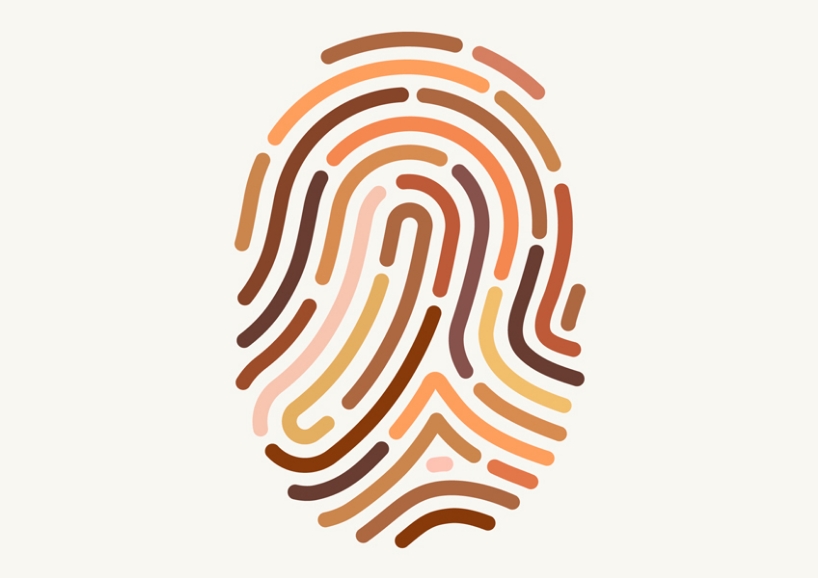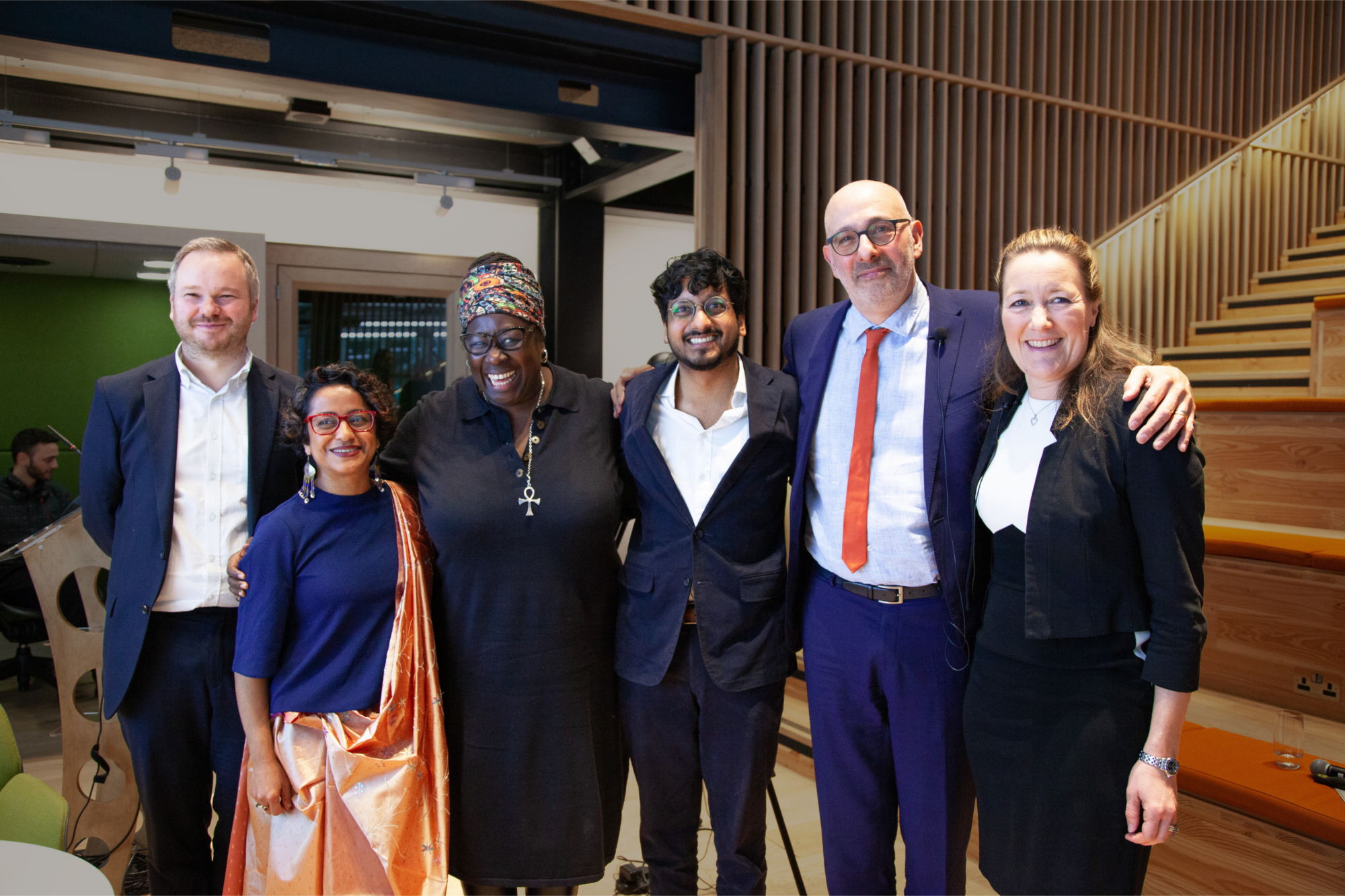
by Goldie Chaudhuri — Feb 22, 2023
How might we enable individuals to uphold their cultural identities and heritage while integrating our societies to form a cohesive whole? Equity by Design could hold the key.
We have a saying in Florida that the more north you go, the more south it gets. I grew up on the Florida-Georgia border in what appeared to be a major city on paper but felt like a small town with deeply Southern roots. As for me, I was an other.
I considered myself a second-generation immigrant. Our family name began with the letter C: early enough in the alphabet that when newcomers arrived in town, they’d flip through the Yellow Pages and come across our name first, then call us to get the lay of the land and be introduced to others in the Indian-American community. There were so few of us that our cultural and religious ceremonies would fit into each other’s living rooms. This changed over the years until the community grew large enough to merit state-wide gatherings in the Big City of Orlando.

I’ve lived in several places like this across America, and also in the UK, which I now call home. The immigration patterns of these two nations are the result of two very different stories but it is not uncommon to hear both nations described as cultural ‘melting pots’. Many feel this paints an inaccurate picture; such diverse places can be likened more to salad bowls – distinctly multicultural but integrated.
Events over recent years have raised public consciousness that the fight against racism is still very much ongoing, and highlighted the barriers a large portion of our populations experience on a daily basis. This has wide reaching social and economic impacts, one of which is a lack of diversity in the workplace. It is holding countries such as the UK and USA back. Where do we go from here?
The need for a new approach: Equity by Design
Finding solutions to these complex workplace challenges has previously fallen under the remit of Equality Diversity & Inclusion (EDI), but this hasn’t had enough impact despite the sense of urgency. In the UK, 1 in 8 of the working age population is from ethnic minority backgrounds, yet only 1 in 16 are in company boardrooms. Forecasts show that by 2051, the proportion of workers in the UK from ethnic minority backgrounds will have risen to 1 in 4 of the working age population – an under-utilised talent pool that needs to be unlocked.
Robin Landman OBE, co-founder of the non-profit anti-racist organisation the Black Leadership Group puts it bluntly: “if Britain is to succeed socially and economically, we have to use the whole talent pool.” His view is reinforced by McKinsey’s findings that companies in the top quartile for racial and ethnic diversity are 33 percent more likely to have financial returns above their respective national industry medians.
Recently, designers globally have been exploring embedding equity within societies, through the emerging field of ‘Equity by Design’. This has blossomed in America where racial discourse now includes thoughtful approaches from MIT D-lab’s work in developing countries, Bill and Melinda Gates Foundation’s Equity-Centred Design (developed by Intentional Futures), and Stanford D-schools Design for Belonging work in community spaces.
These approaches pro-actively give voice to under-represented groups, using design to create inclusive practices, processes, and spaces that foster a sense of belonging. Here in the UK, design consultancy DK&A is beginning to explore how these methods might be applied at a larger-scale, to proactively change workplace cultures.

DK&A are applying ‘Design Thinking’, a central tenet of which is to be human-centred. It deploys a set of methods and tools that help us to go beyond our personal biases, seeing the world through other people’s eyes. It draws from academic disciplines such as ethnographic research to deeply understand diverse groups of people. Might this be the key to reducing some of the barriers disadvantaging minority ethnic people from entering the UK’s workforce? What are the practices and processes that could enable them to join and thrive?
When applying design to societal problems including racism and social integration, it is essential to be participatory and co-creative. Human-centred design relies on user feedback sessions to gather valuable input from stakeholders and end-users.
In my experience as a designer, this can have shortcomings and risks being tokenistic, if designers are unconsciously biased towards input from some stakeholders rather than all. But at its best, a participatory approach designs with the user rather than designing for the user. Co-design builds on the assumption that all people are inherently creative and that the most effective design happens sitting side-by-side with the end user in the room, throughout the process.
David Kester, founder of DK&A and former UK Design Council CEO, reflects on the emergence of a new practice model for social innovators: “What we have here is the fusion of two disciplines coming together to create something new and exciting. It is the very definition of interdisciplinarity – when professional approaches modify through mixing. In this instance, EDI professionals, who work in the field of social justice are rubbing shoulders with designers who specialise in collaborative innovation. The combined affect is a new discipline of Equity by Design.”
DK&A will be using this equitable approach to look at workplace integration. The goal is to offer a learning process, where organisations begin to understand some of the barriers preventing under-represented groups from working for them. They will be asked to consider what anti-racist recruitment methods could look like.
It will be a delicate balance, between meaningfully involving ethnic minority voices, but not making the burden of finding solutions theirs alone. Trust will need to be built. Underrepresented people may have sat through tokenistic consultations in the past and be reluctant to trust again. Lack of representation, especially at senior levels, can limit the range of voices that get heard. Sharing lived experiences of racism, is often emotionally draining, and it will be vital to provide a safe space in which to co-create a more integrated future to benefit us all.
Lived experience…
I know from personal experience that even well-intended diversity initiatives can result in unintended consequences, by not fully understanding the problem or even asking the wrong question.
As an American teenager, I participated in a wide-reaching social integration experiment. I was enrolled in an academically selective school system known as “magnet schools” – The term “magnet” indicating that students would be attracted from across social strata, often from upper-middle class neighbourhoods, into predominantly black inner city schools. These schools were developed in response to the landmark 1954 Brown v. Board of Education Supreme Court ruling that declared segregated schools unconstitutional.

In reality, mine and other magnet schools ran as a school within a school. The mostly upper-middle class white students and “model minority” Asian Americans enrolled in the college-level courses and enrichment programmes, while the local neighbourhood kids did not. We felt pride but also guilt at being part of a well-meaning desegregation programme, that anyone could see wasn’t actually achieving the intended results.
Magnet schools have since come under fire for being plagued with some of the same equity issues we see in the workforce. They too need anti-racist application processes to ensure that once people of colour are admitted they are granted the same opportunities. We need to collect data on the diversity of our workplaces and institutions, but also interrogate the lived experiences behind those numbers. Are ethnic minorities truly accessing opportunities and achieving leadership positions at the same rate as their peers?
Across corporate America, where I began my career, EDI initiatives were mostly employee training, a tick box exercise to say the organisation was addressing gender and racial discrimination. It was too easy to dismiss the lack of diversity in the workforce as a so-called pipeline problem, stemming from not enough applicants. If Equity by Design is to have more impact than previous EDI practices, it will be because it is engaging with the stories behind the statistics to build real change.
How to embed anti-racism in corporate culture
The Black Leadership Group has been effective in helping organisations evaluate their antiracist practices. The group’s co-founder Robin says, “There have been a growing number of progressive organisations across a whole range of sectors that want to make a difference, but they needed guidance, they needed insights from people with lived experience.”
Robin and his team understand and work with the issue that, “Racism is an uncomfortable conversation to have and it’s important to give people the ability to move beyond the awkward stage and actually say, ‘Right, we’ve done that part, now what cultural changes can we make in our organisation?’”
In corporate environments it can be hard to uncover equity problems and determine where the urgent conversations need to be had. Kate Hall, project director for the Design House at Arup, was used to managing mega projects and overseeing employee wellbeing, but issues around race were going unspoken. She and her team have begun to deal with this. “When you’re leading a large team, it’s really important that you understand the needs of the team. So we do an annual survey, and what I heard from the teams were these microaggressions, all these little instances that are happening across the project.”
Kate Dempster, DK&A’s Associate, and expert in organisational change and practise around social justice and EDI, echoes this: ”I think data is a hugely important and powerful piece in shaping how organisations can progress EDI. But as I said, it’s not just the raw data, it’s also the insight and the understanding of experiences and how they play out in the workplace.” Kate Hall identifies the same need within Arup, “We need to talk about race, we need to talk about culture, we need to understand the issues and we need to talk about what is appropriate and what isn’t appropriate.”
These problems are ubiquitous, research from Business in the Community shows that 63% of people across all industries are not comfortable talking about race in the workplace.
Issues are further complicated by the intersections of gender and race. My own perspective on the lack of workplace diversity was informed by being a woman in technology. By the time I left the industry in 2013, Sheryl Sandberg had just published Lean In, which led to impactful initiatives including the annual McKinsey report, Women in the Workplace. In my conversations with Kate Hall and Kate Dempster, they also reflected on lived experience as women in senior leadership first, highlighting the need to consider diversity through race but also all the other protected characteristics of the Equality Act of 2010, including gender, religion, and age.

The strides made in gender equity are one of the few wins of the past decade, they show what is possible. Robin of the Black Leadership Group notes, “with the exception of the gender interest groups, I don’t think any of the protected characteristics have benefited from the EDI approach in the last 12 years [since the Equality Act was passed in the UK].” How can we expand the progress made to tackle workplace misogyny to better integrate workers from ethnic minority backgrounds? Will the same methods work, or will we need a fresh approach?
More businesses are publishing their EDI progress in their annual reports, giving valuable visibility so we can better determine where to target solutions. Progressive not-for profits are also beginning to share their learnings, such as the Wellcome Collection’s anti-racist principles and toolkit and Business in the Community’s Racism and Inappropriate Behaviours: Five Actions for Allies.
Equity by Design seeks to innovate within this space and drive positive change within the workforce of London – one of the world’s most diverse cities.
Designing a more equitable London
Mayor of London, Sadiq Khan, has commissioned a Design Lab for workforce integration to help unlock the potential of its increasingly diverse population. DK&A has joined forces with the Black Leadership Group to co-create the Design Lab over the coming year, helping 30 top London employers from the Green, Health, and Creative sectors to co-create anti-racist practices within their organisations.
The Design Lab will bring together the latest anti-racism practice with the co-creative participatory methods of design thinking, enabling people to voice their lived experiences to help find solutions. This won’t be easy. As Phyllis Abebreseh from the Greater London Authority points out, “Many companies do not collect enough data to have a clear picture of their workforce diversity.” Phyllis’ colleague Atif Shafique adds, “These are complex problems that cannot be solved in linear ways. They need to be researched, prototyped and implemented in the real world before understanding the potential impacts.”
There is genuine optimism about using design thinking to address EDI challenges in London’s workforce. It creates space for collaborative conversations but then quickly goes from talking to doing, with real-world action envisioning, building and testing innovative practices, processes and services for organisational and cultural change.
Speaking about the Mayor of London’s Design Lab 2023, David Kester said: “This is an unparalleled opportunity for companies in key business sectors such as Public Health, Green Infrastructure and the Creative Economy to take meaningful action on workforce integration. A Design Lab provides the safe space for experimentation and for peer support. London is a multicultural business hub: a centre for commerce with an abundance of diverse talent. It is the ideal city to show leadership in this area and to reap the economic and social dividends.”
Measuring success: through numbers and stories
This is just the start, and DK&A and the Black Leadership Group plan on offering Equity by Design training more widely. Kate Dempster, Associate of DK&A, says, “We’re excited to work with companies who are committed to equity and anti-racism as a long-term journey.” DK&A also aim to launch an open enrolment course, which Kate describes as “a space where people can connect with each other, provide peer support and work through issues together to find shared solutions.”
Elaborating on this, David says, “The social and economic imperatives for workforce integration are arguments that have been won. We all know why. The struggle is how. How to be relentless. How to increase engagement. How to accelerate. And how to turn a subject so emotive into something normal and productive.” It’s a deeply personal topic and one where many have their own stories to share, and you can read David’s account of his family’s experiences here.
Reflecting further on my childhood in America, my otherness as a person of colour in a predominantly white place also came from the fact that there were so few of us. I couldn’t identify as a Bengali American, only as part of the larger sub group of Indian Americans or Asian Americans (meaning anyone from either South Asia and East Asia). I didn’t particularly have anything in common with the handful of Indian Americans in my school, all of us separated by language, food and customs.
Our lunch tables were self-segregated by both interest and race, and while I was at ease moving between tables, not all of my classmates were. One very kind Korean classmate once came up to me and asked why I didn’t sit at the Indian table and if perhaps I wanted to join them at the Korean table. We’re all still on this journey, but perhaps we can begin by sitting around slightly more diverse tables – whether that’s in the cafeteria or the boardroom.
If you would like to learn more about our Equity by Design training, or about the Mayor of London’s 2023 Design Lab, then please get in touch.

